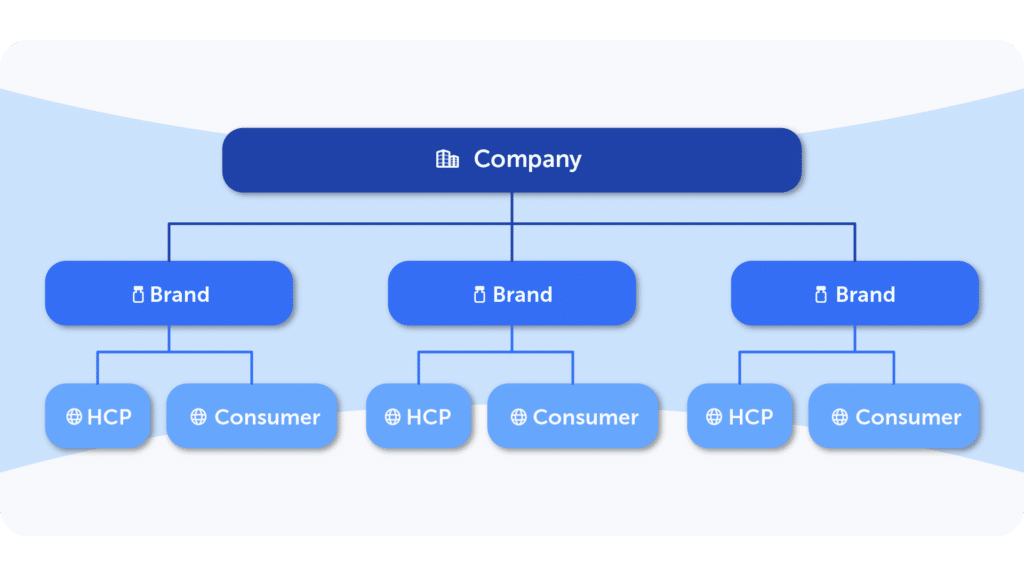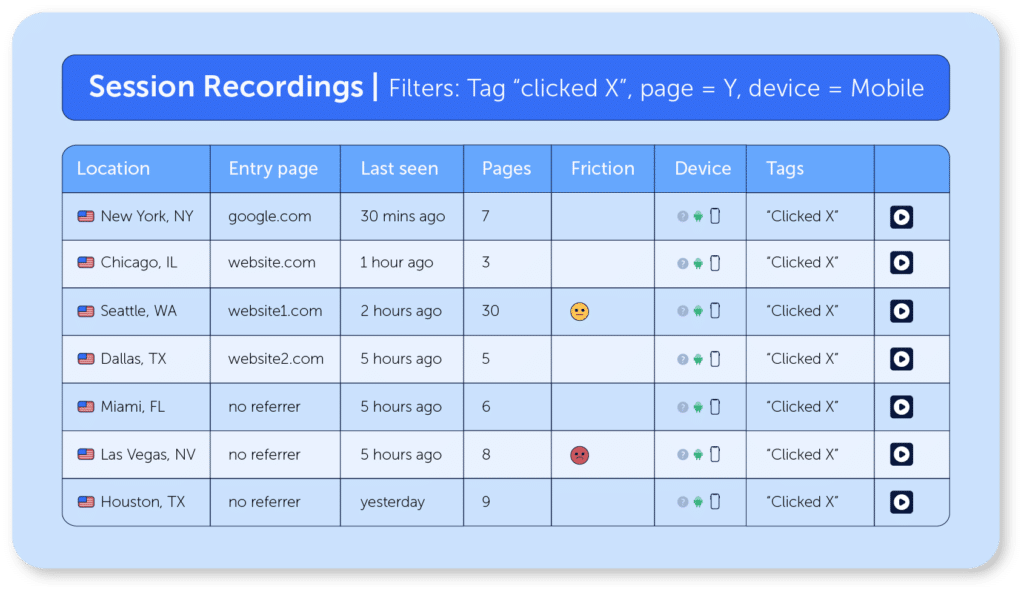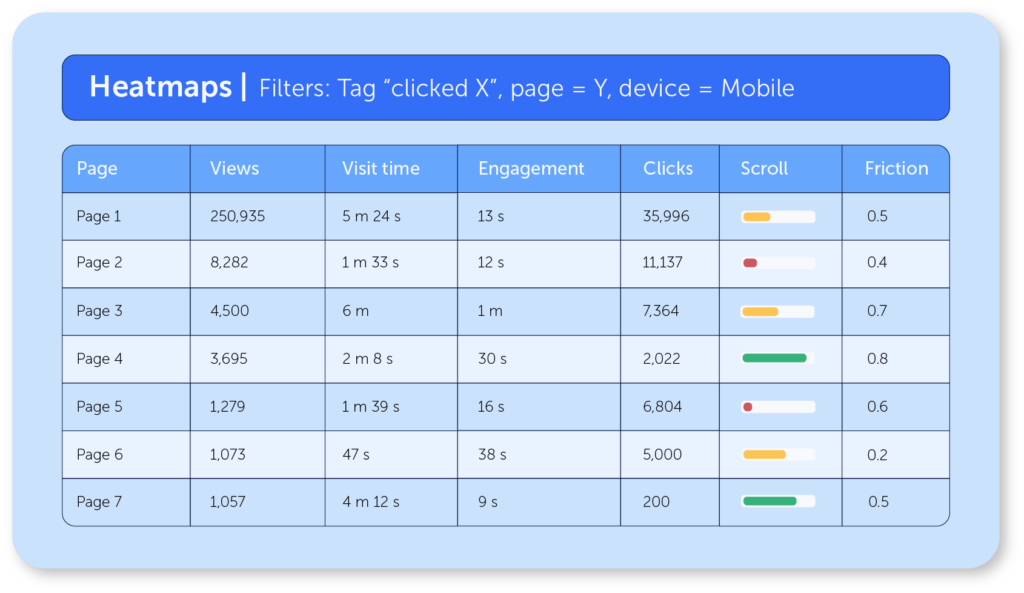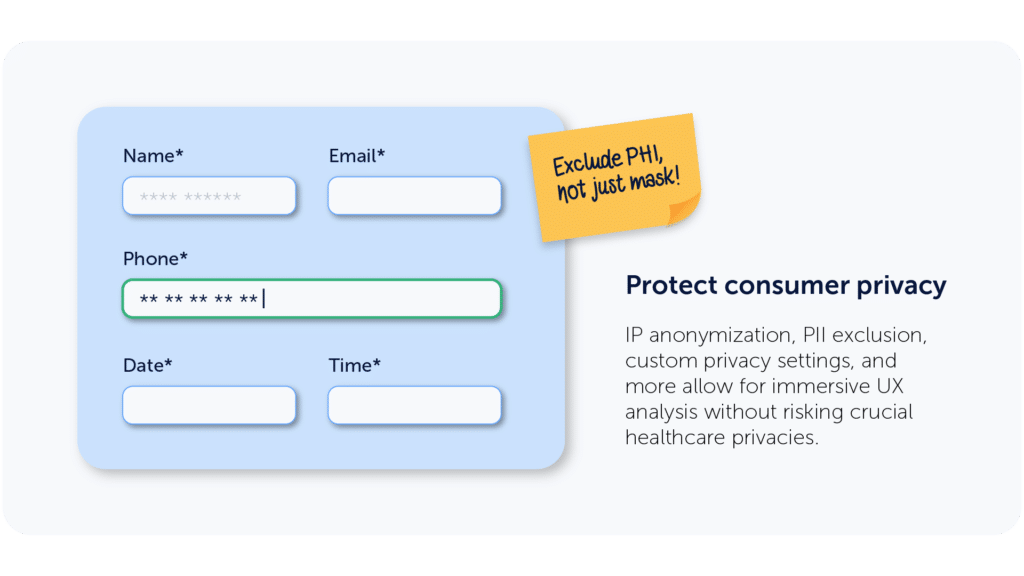Get the AstraZeneca story sent directly to your inbox
AstraZeneca is a household name in the pharmaceutical industry. As a global, science-led pharmaceutical company, its products are sold in more than 130 countries, and its innovative drugs are used by millions of patients worldwide.
With more than 83,000 employees globally, AstraZeneca offers a myriad of brands with drugs aimed at battling cancer and various rare diseases. Thanks to its groundbreaking discoveries and robust omnichannel marketing efforts, it has gained recognition even among those with little to no connection with the pharmaceutical industry.
AstraZeneca has been leveraging Mouseflow since 2018 as part of its digital transformation journey. With the tool in use across over 45 websites by 180 users across different teams, the objective is to refine websites, streamline user journeys, and enhance SEO effectiveness, particularly focusing on improving content engagement. In this case, we’ll delve into how Marisa, the lead of the Digital Excellence SEO team at AstraZeneca, and her team effectively apply Mouseflow in their work.
Organic search serves as a crucial channel for a pharmaceutical brand like AstraZeneca. It helps deliver accurate and comprehensive information to both consumers and healthcare professionals (HCPs) for each brand and drug. However, carrying out SEO and adjusting websites for a global pharmaceutical brand is quite a challenge.

In a regulated industry like ours, data-driven decisions are crucial. Mouseflow enables us to understand user behavior and optimize our websites effectively.
Website Optimization Challenges in a Highly Regulated Industry
Addressing User Engagement on Multiple Brand Sites
AstraZeneca, as a pharmaceutical company, manages a multitude of brands, each corresponding to a particular drug. Each brand typically maintains at least two websites – one for consumers and another for healthcare professionals (HCPs).
However, the nature of these consumers can vary significantly based on the brand’s establishment and the type of drug. They could be individuals who are only aware of their symptoms and lack further knowledge, or they could be patients with prescriptions. The HCP audience also varies, ranging from administrators and nurses to specific doctors. These audiences require very different content tailored to their knowledge and needs – and they engage with it differently as well.

To address this, in addition to tracking traditional SEO metrics like keywords and organic search traffic, AstraZeneca also tracks content engagement metrics such as time on site, bounce rate, and pages per visit. Also, they track a set of activities that vary depending on the CTAs each site presents. These activities could range from downloading a guide to signing up for an email newsletter or filling out a form.
Increasing content engagement is a critical task for AstraZeneca’s SEO Excellence team. But without stepping into the users’ shoes, it can be challenging to understand why certain pages experience low engagement. Traditional analytics data can illuminate the fact that users aren’t downloading the guide, but it doesn’t explain the reasons behind this.
The Impact of Regulatory Constraints on Website Updates
The pharma industry operates under strict regulations, which heavily influence how websites are developed and updated. Each update requires approval from the legal department, meaning website updates can take anywhere from 6 months to a year. This essentially negates one of the pillars of modern marketing – experimentation.
In less regulated industries, marketers rely on running quick experiments and implementing successful strategies. A failed experiment is not a cause for concern – you can swiftly launch another. However, in pharma, things are different. With website updates taking so long, missteps are not affordable. Therefore, AstraZeneca must ensure each website update is successful from the first attempt – waiting another half a year to correct it isn’t feasible.
Hence, they conduct thorough research of their target audience, user journeys, language use, etc. A deep understanding of what’s happening on the website and why is also crucial – as well as knowing how to address it. While traditional analytics tools provide numbers that answer the “what” question, they don’t answer the “why”. And the reasons behind certain user behaviors are absolutely critical for developing a strong hypothesis for the next update. Convincing all stakeholders to approve these changes is also important, and raw data is often insufficient for this purpose.
Choosing Analytical Tools Amid Data Privacy Regulations
Another challenge comes from finding the right tools for tracking these metrics and analyzing the websites to foster improvements. The pharma industry is limited in its choice of tools by data privacy regulations such as GDPR and CCPA. All the tools that pharma SEO specialists use should be fully compliant with these (and some other) regulations.
However, many tools aren’t. For example, Google Analytics, which until recently was often considered an industry standard for web analytics, fails to comply with GDPR.
Leveraging Mouseflow to Optimize Web Engagement and User Experience
Marisa Groves leads the SEO Excellence team at AstraZeneca. The SEO Excellence team’s role is of an internal consultant to different AstraZeneca’s brands, helping them to build and update websites that rank for the right keywords and attract relevant and highly engaged traffic. Mouseflow helps them to overcome the aforementioned challenges.
Utilizing Mouseflow for Qualitative Analysis and Enhanced Content Engagement
AstraZeneca’s SEO Excellence team is using Mouseflow to come up with recommendations on updating websites to improve meaningful engagement, as well as for best practices to create new sites for new drugs, be it for consumers or for HCPs. Mouseflow’s session recordings allow the team to literally step into the users’ shoes and understand how they use the website, what attracts their attention, and to come up with strong hypotheses for optimizing the site.
The highly visual nature of heatmaps and session recordings helps provide recommendations to the teams building the websites and more effectively collaborate with stakeholders, showing them visual proof of why something has to be changed.


With more than 45 websites aimed at both consumers and HCPs to track and regularly improve, the SEO Excellence team is the go-to resource in AstraZeneca for recommendations, insights, and best practices on website building and optimization.
Reducing User Friction and Boosting Site Engagement
AstraZeneca’s SEO Excellence team also uses Mouseflow to find the reasons behind certain behaviors and content engagement discrepancies. If, for example, a guide is downloaded less frequently than expected, the team goes to Mouseflow to get insights on why it’s happening. Conversion funnels and custom tags provide valuable insights on user engagement and allow to identify what exactly is preventing the users from downloading the guide.
Whatever roadblocks or friction the users are facing, the SEO Excellence team is able to uncover it using Mouseflow and provide helpful recommendations to improve user experience. Relying on Mouseflow’s behavior analytics helps AstraZeneca to fully understand what their website visitors want and need, and update the sites to address their desires.
Finally, Mouseflow helps connect the dots between analytics tools and SEO tools. Mouseflow is also Marisa’s go-to tool in situations when something in a report from her team members feels strange or needs a better explanation. While SEO tools and analytics tools provide the numbers, Mouseflow helps explain those numbers and find solutions to improve them.
Maintaining Compliance with Mouseflow’s Anonymized Data Collection
Thanks to the visual privacy tool that allows to remove any fields or elements from recordings, Mouseflow collects fully anonymized data. This (among other things) makes Mouseflow fully compliant with GDPR and CCPA. So, AstraZeneca can use it across different websites in different countries without any compliance issues.


Mouseflow is a great tool to support data and recommendations with visuals, helping our team in stakeholder relations.
Conclusion
By using user behavior insights from Mouseflow and combining them with quantitative data from SEO tools and Adobe Analytics, AstraZeneca’s SEO Excellence team lead by Marisa Groves successfully maintains and updates more than 45 websites dedicated to different drugs and aimed at different target audiences.
Despite the pharmaceutical industry’s heavy regulations that slow down the process of website development and limit the choice of tools, AstraZeneca manages to keep their websites highly engaging and provide just the right information for consumers and HCPs.
